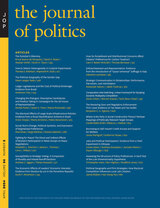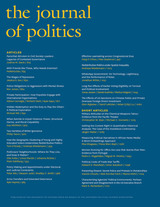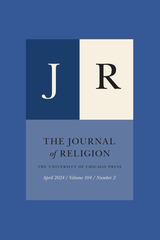7 books about Laumann, Edward O.
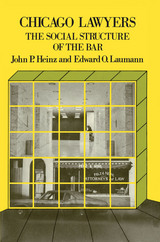
Chicago Lawyers
The Social Structure of the Bar
John P. Heinz
Russell Sage Foundation, 1982
What determines the systematic allocation of status, power, and economic reward among lawyers? What kind of social structure organizes lawyers' roles in the bar and in the larger community? As Heinz and Laumann convincingly demonstrate, the legal profession is stratified primarily by the character of the clients served, not by the type of legal service rendered. In fact, the distinction between corporate and individual clients divides the bar into two remarkably separate hemispheres. Using data from extensive personal interviews with nearly 800 Chicago lawyers, the authors show that lawyers who serve one type of client seldom serve the other. Furthermore, lawyers' political, ethno-religious, and social ties are very likely to correspond to those of their client types. Greater deference is consistently shown to corporate lawyers, who seem to acquire power by association with their powerful clients. Heinz and Laumann also discover that these two "hemispheres" of the legal profession are not effectively integrated by intraprofessional organizations such as the bar, courts, or law schools. The fact that the bar is structured primarily along extraprofessional lines raises intriguing questions about the law and the nature of professionalism, questions addressed in a provocative and far-ranging final chapter. This volume, published jointly with the American Bar Foundation, offers a uniquely sophisticated and comprehensive analysis of lawyers' professional lives. It will be of exceptional importance to sociologists and others interested in the legal profession, in the general study of professions, and in social stratification and the distribution of power.
[more]

The Hollow Core
Private Interests in National Policy Making
John P. Heinz, Edward O. Laumann, Robert L. Nelson, and Robert H. Salisbury
Harvard University Press
Critics of the policy-making process argue that private interest groups exert too much influence on the decisions of government, but only rarely has this proposition been examined systematically. The Hollow Core draws on interviews with more than 300 interest groups, 800 lobbyists, and 300 government officials to assess the efforts of private organizations to influence federal policy in four areas—agriculture, energy, health, and labor policy.
[more]
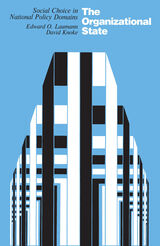
Organizational State
Social Choice: In National Policy Domains
Edward O. Laumann
University of Wisconsin Press, 1987
The Federal Government in the United States is a government “of the people, by the people, and for the people.” Presidents are elected by popular vote in the nation (filtered through the electoral college), Senators are elected by popular vote in their states, and Representatives are elected by popular vote in their Congressional districts. Cabinet members and agency heads are appointed by the elected president, as are members of the Supreme Court.
But this says nothing about politics. Professor Lauman and Knoke have asked, in this book, how policies were made, in the period 1977-1980, in the areas of energy and health. The question is a very different one from the question of how the positions of president and Congress are filled.
[more]

Sex, Love, and Health in America
Private Choices and Public Policies
Edited by Edward O. Laumann and Robert T. Michael
University of Chicago Press, 2000
In 1994, the University of Chicago Press published the landmark study The Social Organization of Sexuality, "the most important survey since the Kinsey report," according to Time magazine. Based on data collected from the National Health and Social Life Survey, this heralded book answered hundreds of questions about the state of sex in America: how widespread is extramarital sex? how do women's sexual lives differ from men's? how do social factors such as education, race, and religion affect sexual conduct? While amazingly comprehensive, this earlier volume was devoted primarily to establishing baseline statistics and information. Two authors of that study, Edward O. Laumann and Robert T. Michael, now bring together the result of deeper research into and analysis of the information presented in the 1994 volume. The result, Sex, Love, and Health in America, is a companion to The Social Organization of Sexuality and furthers our understanding of Americans' sexual practices.
Sixteen researchers have contributed essays to this collection that explore controversial topics, including teenage sexuality, sexual contact between children and adults, abortion, the role of cohabitation in the sexual satisfaction of couples, and how sexual behavior has changed in response to AIDS, as well as a widely heralded examination of circumcision, reported in the New York Times, which discusses the effects of the procedure on disease transmission and the preference for certain sexual practices. In its analysis, policy recommendations, and revelations about private practices, Sex, Love, and Health in America will, like the earlier volume, have a major role in shaping the discussion about American sexual behavior.
Sixteen researchers have contributed essays to this collection that explore controversial topics, including teenage sexuality, sexual contact between children and adults, abortion, the role of cohabitation in the sexual satisfaction of couples, and how sexual behavior has changed in response to AIDS, as well as a widely heralded examination of circumcision, reported in the New York Times, which discusses the effects of the procedure on disease transmission and the preference for certain sexual practices. In its analysis, policy recommendations, and revelations about private practices, Sex, Love, and Health in America will, like the earlier volume, have a major role in shaping the discussion about American sexual behavior.
[more]
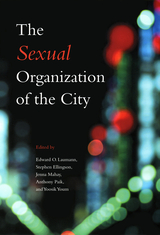
The Sexual Organization of the City
Edited by Edward O. Laumann, Stephen Ellingson, Jenna Mahay, Anthony Paik, and Y
University of Chicago Press, 2004
We think of the city as a place where anything goes. Take the sensational fantasies and lurid antics of single women on Sex in the City or young men on Queer as Folk, and you might imagine the city as some kind of sexual playground—a place where you can have any kind of sex you want, with whomever you like, anytime or anywhere you choose.
But in The Sexual Organization of the City, Edward Laumann and company argue that this idea is a myth. Drawing on extensive surveys and interviews with Chicago adults, they show that the city is—to the contrary—a place where sexual choices and options are constrained. From Wicker Park and Boys Town to the South Side and Pilsen, they observe that sexual behavior and partnering are significantly limited by such factors as which neighborhood you live in, your ethnicity, what your sexual preference might be, or the circle of friends to which you belong. In other words, the social and institutional networks that city dwellers occupy potentially limit their sexual options by making different types of sexual activities, relationships, or meeting places less accessible.
To explain this idea of sex in the city, the editors of this work develop a theory of sexual marketplaces—the places where people look for sexual partners. They then use this theory to consider a variety of questions about sexuality: Why do sexual partnerships rarely cross racial and ethnic lines, even in neighborhoods where relatively few same-ethnicity partners are available? Why do gay men and lesbians have few public meeting spots in some neighborhoods, but a wide variety in others? Why are African Americans less likely to marry than whites? Does having a lot of friends make you less likely to get a sexually transmitted disease? And why do public health campaigns promoting safe sex seem to change the behaviors of some, but not others?
Considering vital questions such as these, and shedding new light on the city of Chicago, this work will profoundly recast our ideas about human sexual behavior.
But in The Sexual Organization of the City, Edward Laumann and company argue that this idea is a myth. Drawing on extensive surveys and interviews with Chicago adults, they show that the city is—to the contrary—a place where sexual choices and options are constrained. From Wicker Park and Boys Town to the South Side and Pilsen, they observe that sexual behavior and partnering are significantly limited by such factors as which neighborhood you live in, your ethnicity, what your sexual preference might be, or the circle of friends to which you belong. In other words, the social and institutional networks that city dwellers occupy potentially limit their sexual options by making different types of sexual activities, relationships, or meeting places less accessible.
To explain this idea of sex in the city, the editors of this work develop a theory of sexual marketplaces—the places where people look for sexual partners. They then use this theory to consider a variety of questions about sexuality: Why do sexual partnerships rarely cross racial and ethnic lines, even in neighborhoods where relatively few same-ethnicity partners are available? Why do gay men and lesbians have few public meeting spots in some neighborhoods, but a wide variety in others? Why are African Americans less likely to marry than whites? Does having a lot of friends make you less likely to get a sexually transmitted disease? And why do public health campaigns promoting safe sex seem to change the behaviors of some, but not others?
Considering vital questions such as these, and shedding new light on the city of Chicago, this work will profoundly recast our ideas about human sexual behavior.
[more]
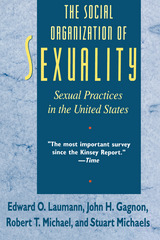
The Social Organization of Sexuality
Sexual Practices in the United States
Edward O. Laumann, John H. Gagnon, Robert T. Michael, and Stuart Michaels
University of Chicago Press, 1994
The Social Organization of Sexuality reports the complete results of the nation's most comprehensive representative survey of sexual practices in the general adult population of the United States. This highly detailed portrait of sex in America and its social context and implications has established a new and original scientific orientation to the study of sexual behavior.
"The most comprehensive U.S. sex survey ever." —USA Today
"The findings from this survey, the first in decades to provide detailed insights about the sexual behavior of a representative sample of Americans, will have a profound impact on how policy makers tackle a number of pressing health problems." —Alison Bass, The Boston Globe
"A fat, sophisticated, and sperm-freezingly serious volume. . . . This book is not in the business of giving us a good time. It is in the business of asking three thousand four hundred and thirty-two other people whether they had a good time, and exactly what they did to make it so good." —Anthony Lane, The New Yorker
New York Times Book Review Notable Book of the Year
"The most comprehensive U.S. sex survey ever." —USA Today
"The findings from this survey, the first in decades to provide detailed insights about the sexual behavior of a representative sample of Americans, will have a profound impact on how policy makers tackle a number of pressing health problems." —Alison Bass, The Boston Globe
"A fat, sophisticated, and sperm-freezingly serious volume. . . . This book is not in the business of giving us a good time. It is in the business of asking three thousand four hundred and thirty-two other people whether they had a good time, and exactly what they did to make it so good." —Anthony Lane, The New Yorker
New York Times Book Review Notable Book of the Year
[more]
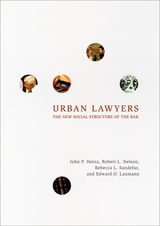
Urban Lawyers
The New Social Structure of the Bar
John P. Heinz, Robert L. Nelson, Rebecca L. Sandefur, and Edward O. Laumann
University of Chicago Press, 2005
Over the past several decades, the number of lawyers in large cities has doubled, women have entered the bar at an unprecedented rate, and the scale of firms has greatly expanded. This immense growth has transformed the nature and social structure of the legal profession. In the most comprehensive analysis of the urban bar to date, Urban Lawyers presents a compelling portrait of how these changes continue to shape the field of law today.
Drawing on extensive interviews with Chicago lawyers, the authors demonstrate how developments in the profession have affected virtually every aspect of the work and careers of urban lawyers-their relationships with clients, job tenure and satisfaction, income, social and political values, networks of professional connections, and patterns of participation in the broader community. Yet despite the dramatic changes, much remains the same. Stratification of income and power based on gender, race, and religious background, for instance, still maintains inequality within the bar.
The authors of Urban Lawyers conclude that organizational priorities will likely determine the future direction of the legal profession. And with this landmark study as their guide, readers will be able to make their own informed predictions.
Drawing on extensive interviews with Chicago lawyers, the authors demonstrate how developments in the profession have affected virtually every aspect of the work and careers of urban lawyers-their relationships with clients, job tenure and satisfaction, income, social and political values, networks of professional connections, and patterns of participation in the broader community. Yet despite the dramatic changes, much remains the same. Stratification of income and power based on gender, race, and religious background, for instance, still maintains inequality within the bar.
The authors of Urban Lawyers conclude that organizational priorities will likely determine the future direction of the legal profession. And with this landmark study as their guide, readers will be able to make their own informed predictions.
[more]
READERS
Browse our collection.
PUBLISHERS
See BiblioVault's publisher services.
STUDENT SERVICES
Files for college accessibility offices.
UChicago Accessibility Resources
home | accessibility | search | about | contact us
BiblioVault ® 2001 - 2024
The University of Chicago Press


